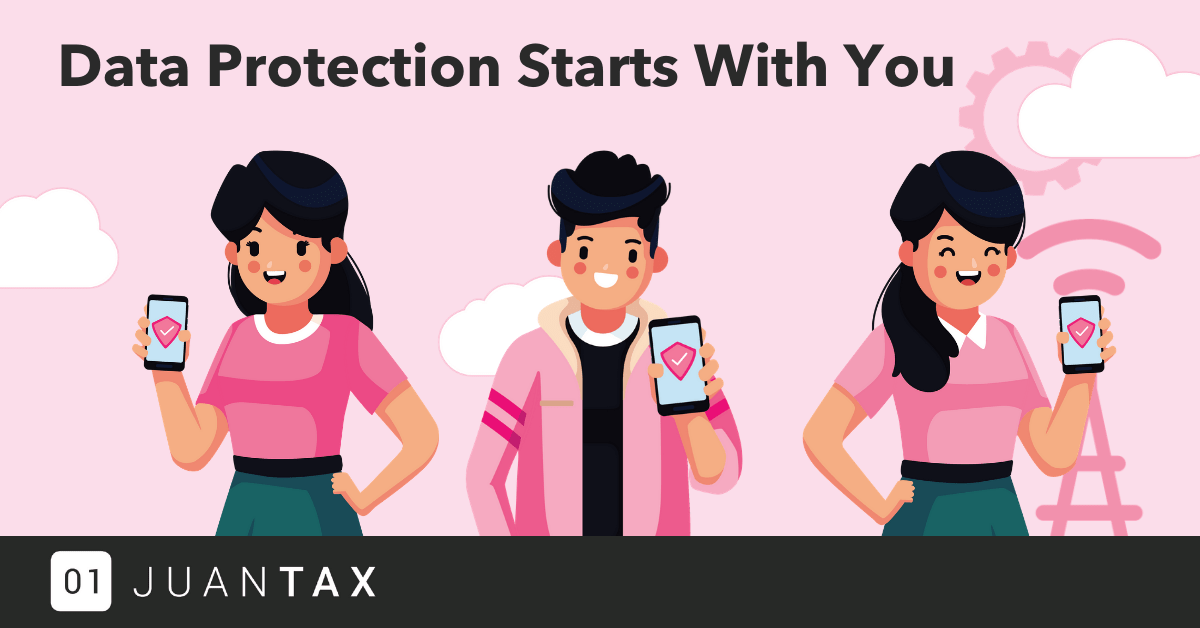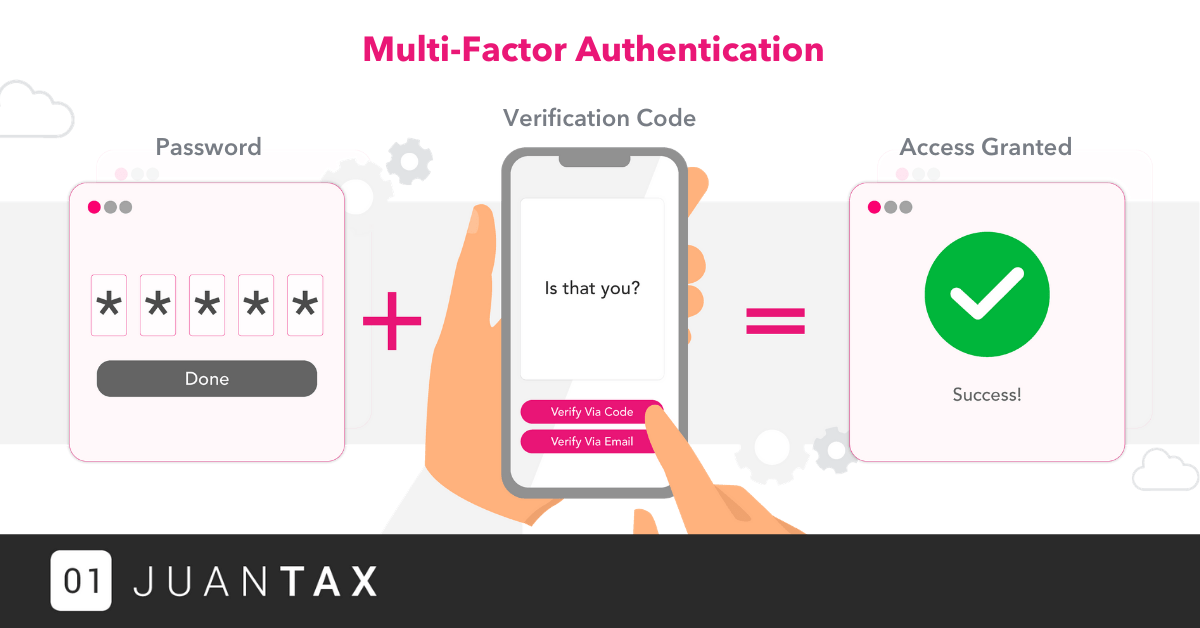Data breaches happen when a hacker uses different methods to acquire a user’s personal information, change website contents, or to use identity theft for gathering even more information.

What You Need To Know About Multi-Factor Authentication
Passwords are no longer safe—in the early years, they protected you from others gaining access to your information. Over the years, they’ve become weaker as a computer or mobile device is not able to determine when a password has been compromised.
We care deeply for our users and want to make sure they start using Multi-Factor Authentication only for their best interests. When it comes to accounting and taxes, users could be dealing with thousands to millions of pesos, which means any data stolen during a security breach could prove devastating for a business.
JuanTax has security measures in place to make sure accounts are safe, but these extra measures are in the hands of our users, giving them control in protecting their own data.
What is Multi-Factor Authentication (MFA)?
Multi-Factor Authentication (MFA) is a form of data protection that we encourage our users to enable, because it requires them to provide verifications that allow access to their data. Instead of asking for just your username and password, MFA will require one or more additional verification methods to protect you from an unauthorized cyber attack.

On top of your username and password, other verification methods include the use of your smartphone, your geographic location, and a time-based window for entering a code.
For example, Juan is a user in Makati who has a smartphone. To log in to his account, Juan has to sign in with his username/password, then use his smartphone to get a code to continue logging in within 10 minutes. Otherwise, he won’t have access to his account.
We hope you understand that we only want to keep you safe, and that you are in control of your account access. Click here to learn more about how to set up MFA with JuanTax.










